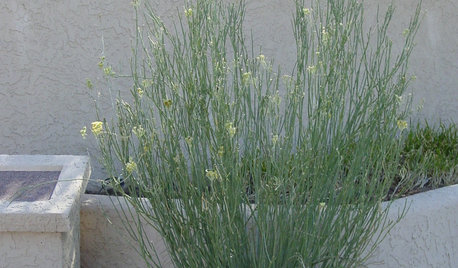No, I'm not going to put the subject of this post in capital letters, or use exclamation points, or anything else to draw attention, except for the fact that this is the truth. I, along with many others, have been touting the plight of the Monarch butterfly for several years now.
I have been enjoying the Monarchs nectaring on the Sunflowers, the Golden Crownbeard, the Orange Cosmos, the Zinnias, and the milkweed blossoms this year, and then I received a letter from Chip Taylor, Director of Monarch Watch at the University of Kansas, pointing out the grim facts of this year's migration, and the future of these beautiful butterflies whose magnificent migration we witness each year here in Oklahoma, as we are a major thoroughfare, the Central flyway for the trip to and from Mexico.
The status of the Monarch population is suffering. This year's population is experiencing a severe decline in numbers due the drought in Oklahoma and Texas. The butterflies that DO make it to Mexico, will be relying on those of us who enhance our gardens by growing milkweed and nectar plants for them, because there is little food for them in their usual habitats, what habitats still exist, that is.
That is not the sole reason for the diminishing numbers. Add in destruction of habitat for various reasons, the use of herbicides to destroy milkweed populations, and the advent of herbicide tolerant crops, as Chip Taylor writes:
"As we pointed out recently, (Brower et al. 2011), the decline is related to the loss of habitat, particularly the rapid adoption of herbicide tolerant (HT) crops. The majority of these crops are planted within the summer (June-August) breeding area for the monarch population. In spite of weed control methods prior to 1996, when HT crops were first introduced, milkweed persisted in these croplands at a low level where they provided an excellent resource for monarchs. With the planting of HT engineered corn and soy followed by the use of glyphosate to control weeds, milkweed has been almost completely eliminated from these crops. At present, the total area of HT crops is larger than that of any state except TX and AK, or about 4 times the state of IL). The decline in the monarch population first became noticeable in 2004 when the percentage of HT corn and soy acreage exceeded 50% of all acreage for these crops."
Doesn't seem like things are likely to improve in the near future.
There is a solution, though. We, as individuals, can dedicate a portion of our gardens to plant milkweed for the Monarchs. Unlike many insects, milkweed, or plants in the Asclepiadaceae family, are the ONLY plants that the Monarch females use for laying their eggs. So, their larvae are not going to destroy or decimate other garden ornamentals or food crops. And we get the added benefit of watching the life cycle of the Monarch, the metamorphosis from egg to caterpillar to chrysalis to butterfly. We can teach our children not only about conservation, but the wonders of this process and appreciation for the beauty of this butterfly. What a joyful experience it has been for my granddaughter!
Thousands have already joined Monarch Watch, established a Monarch Waystation by providing various milkweed plants (which, by the way, are really not "weeds", and many are very ornamental garden plants) and nectar plants. It is a sight to see them in the garden. I became a Monarch Waystation about 5 years ago. I don't have a large garden, but only an area of about 50 sf. dedicated to milkweed and nectar plants for the Monarch. Monarch Waystations consist of individuals, corporations, schools, public gardens, zoos, etc. I display my sign proudly in the front yard and hope that others will see it and follow suit.
It's not a lot of work to grow milkweed, but the rewards are enormous There are milkweed species and cultivars out there for everyone, whether you want a riot of color, a xeric garden, an unusual plant, a native plant, an annual plant, or perennial plants, or whether you are trying to establish a native milkweed that is facing extirpation.
The Monarchs need our help. I can't imagine a world without them. So, yes, this is yet another plea to encourage everyone to plant a row for the hungry Monarchs!
Thank you for reading and I can honestly say, you won't regret providing a little corner of your garden universe for the Monarch butterfly.
Susan
Here is a link that might be useful: Monarch Waystations













JamesY40
susanlynne48Original Author
Related Discussions
More 'Adopted' trees in poor dire straights! Pics
Q
WANTED: inxs and dire straights older music cd's
Q
Dire Need to replant my Bougainvillea
Q
in dire need of paint color suggestions for basement
Q
Okiedawn OK Zone 7
JamesY40
susanlynne48Original Author
tracydr
susanlynne48Original Author